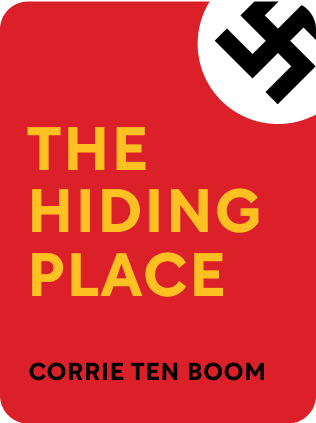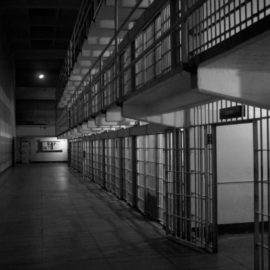

This article is an excerpt from the Shortform summary of "The Hiding Place" by Corrie ten Boom. Shortform has the world's best summaries of books you should be reading.
Like this article? Sign up for a free trial here .
Are there any Dutch Jews? After German Occupation, what happened to the Jews in Holland?
In The Hiding Place, Corrie ten Boom sees the persecution of her Jewish neighbors and can’t stand by. Read more about how life changed for Dutch Jews during WW2.
Changes for Jews in Holland
More disturbing than the rationing, curfews, identity cards, or confiscation of radios, however, were the measures that the German occupiers began to take against Dutch Jews. For years, Corrie’s brother Willem had warned his family about the violent antisemitic ideology of Nazi Germany. Now it was happening on Dutch soil.
The Jewish community of Haarlem began to face harsh discrimination. They were barred from entering restaurants, cafes, and parks, to Corrie’s horror and dismay. The anti-Jewish measures soon took on a violent character—Jewish cemeteries and synagogues were looted and vandalized, with the perpetrators desecrating holy religious texts and painting swastikas on the walls and doors of Jewish houses of worship. Later, Dutch Jews (like Jewish people all over Europe) were marked out from the rest of the community by the infamous decree ordering them to wear yellow stars stitched to their clothing.
The introduction of the yellow star and the campaign of antisemitic persecution revealed to Corrie neighbors whom she hadn’t known were Jewish. One of them was a man she and her sisters had known only as “Bulldog,” so named because he was always to be seen walking his beloved bulldogs through the streets of Haarlem.
Corrie Shocked by Treatment of Dutch Jews
One of the most shocking aspects of the antisemitic campaign was how eagerly many ordinary Dutch people gleefully participated in it. The Netherlands had its own version of the German Hitler Youth, called the NSB. These were local Nazi sympathizers and collaborators, who espoused a hateful antisemitic ideology that found expression in terrorizing and harassing their Jewish neighbors. Corrie was aghast to discover that people whom she had known and seen in Haarlem in ordinary times were now enthusiastic participants in the gathering storm of hate.
By 1941, Dutch Jews began simply disappearing off the streets. There were awful scenes being played out on the streets of Haarlem, as Corrie saw the Dutch Jews that were her neighbors and acquaintances (many of whom she hadn’t even known were Jewish) being subjected to harsh interrogations, raids, and mass arrests. In the watch shop, the disappearances left behind a more subtle, yet sinister trace—repaired watches left on the hooks, never picked up by their owners. As Dutch Jews were hauled off the streets, no one could truly guess where the Germans were taking them. Awful rumors began to circulate about Jews in Holland being deported en masse to camps in Eastern Europe where they would be worked to death or even killed outright.
(Shortform note: Under the German Nuremberg Laws, which were later extended to the countries occupied by the Nazis, anyone who could be proven to have at least three Jewish grandparents was considered to be Jewish, regardless of what religion they practiced. Converting to Christianity would not save one from this new, racial form of antisemitism.)

———End of Preview———
Like what you just read? Read the rest of the world's best summary of Corrie ten Boom's "The Hiding Place" at Shortform .
Here's what you'll find in our full The Hiding Place summary :
- Why devout Christian Corrie ten Boom decided to stand up to the Nazi occupation
- How ten Boom and the Jewish neighbors she was hiding were caught
- How ten Boom survived the concentration camp and left with even stronger faith






